Floral | Green Practices
December 10, 2021
December 10, 2021
December 10th, 2021
It doesn’t come as a surprise to know that weddings consist of numerous flowers! Thinking about what happens to your flowers after your big day can be a hard pill to swallow. We took the time to research and speak with different florists to learn about how selecting your wedding florals can be more sustainable.
But first, we wanted to feature Bloom n’ Toss! Bloom n’ Toss is a wonderful company that picks up flowers that were used at events (that are not re-sellable) and they donate these flowers to the physically and mentally disabled, the blind, cancer patients, seniors, veterans, and frontline workers in a crisis. Their services bring smiles to people’s faces instead of bringing flowers to the trash!
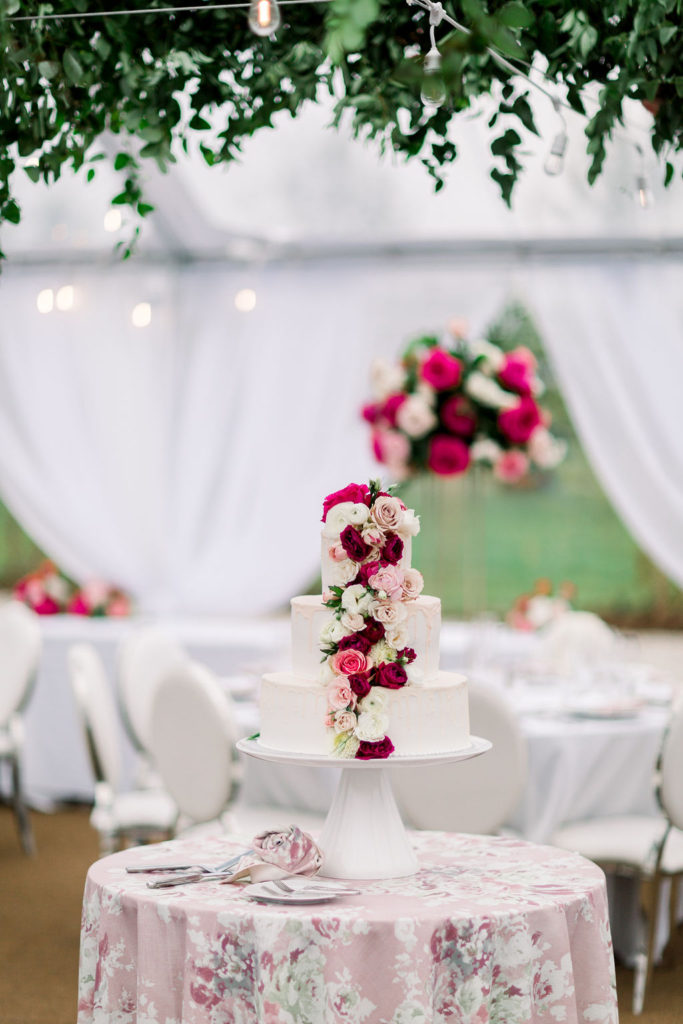
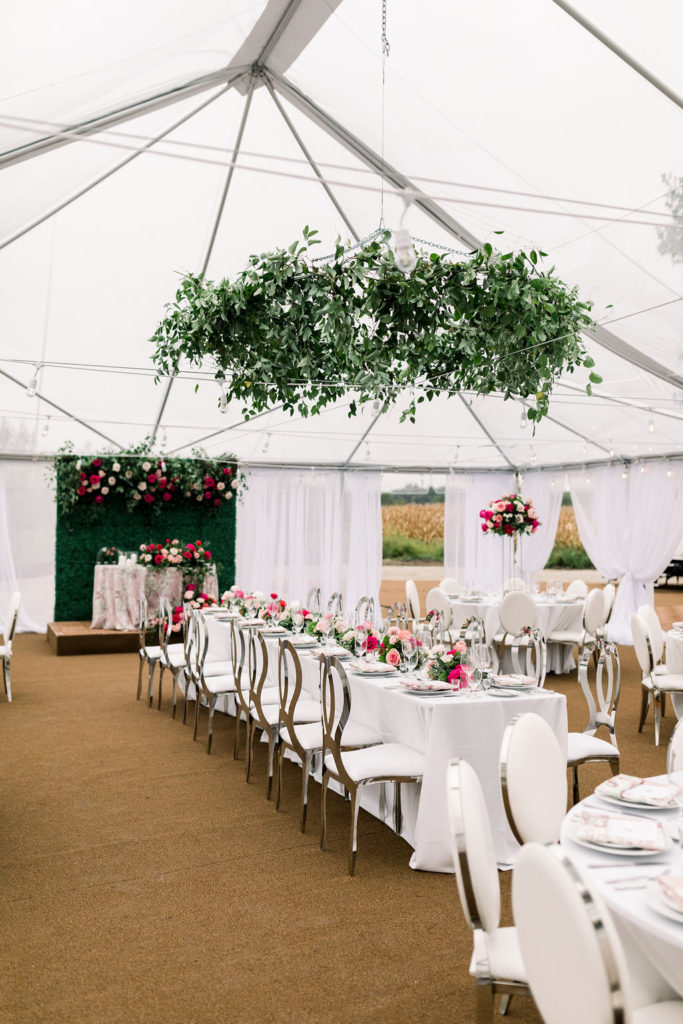
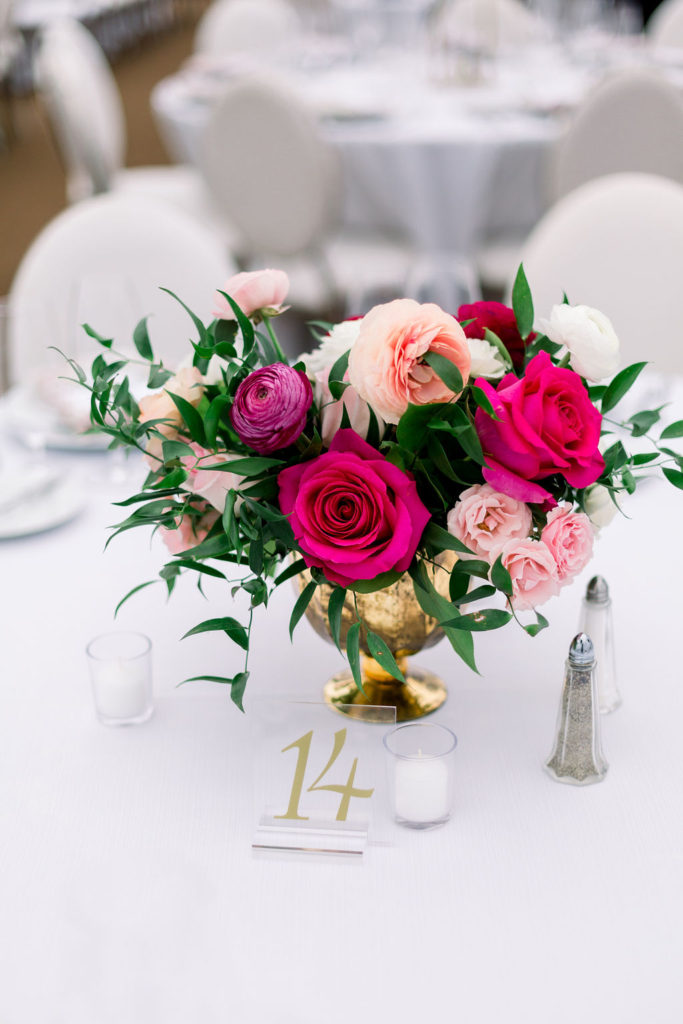
Kat Willrett from Willrett Flower Co. answered a few of our questions:
In what ways does Willrett practice or encourage being green?
“Sustainability is a key part of our mission. In addition to sourcing locally grown products we are also working to reduce the use of Oasis floral foam in our studio. Floral foam is harmful to the environment and we try to avoid using it whenever possible. We also compost and recycle almost all of our waste.”
If a bride wants to be eco-friendly and asks what to do with the flowers after the wedding, what would your best suggestion be?
“Donating flowers after the wedding is a wonderful way to make sure the flowers are enjoyed as long as possible. We also compost all of the flowers and greenery we clean up after the wedding.”
Are there any conscious decisions that can be made when it comes to choosing the types of flowers incorporated in an arrangement? In other words, are some florals more sustainable than others?
“Absolutely, a locally grown flower goes directly from the field to the florist with minimal transport. Imported flowers have a much larger carbon footprint because of the distance they have to travel to reach our studio. Being open to using less traditional locally grown flowers instead of traditional blooms like imported roses and hydrangeas can make your wedding much more sustainable.”
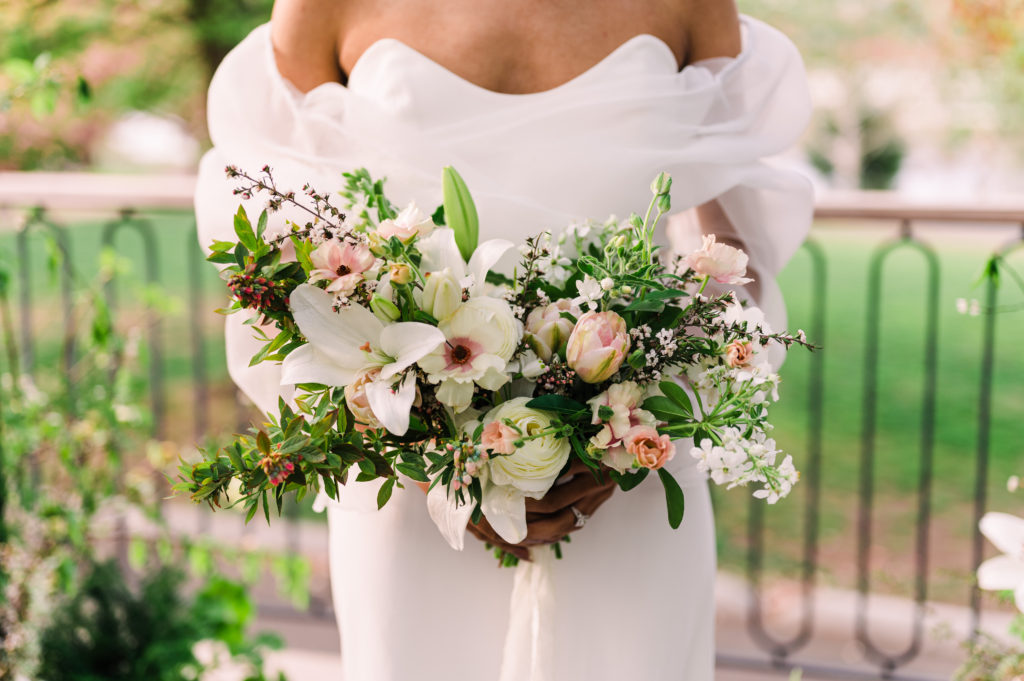
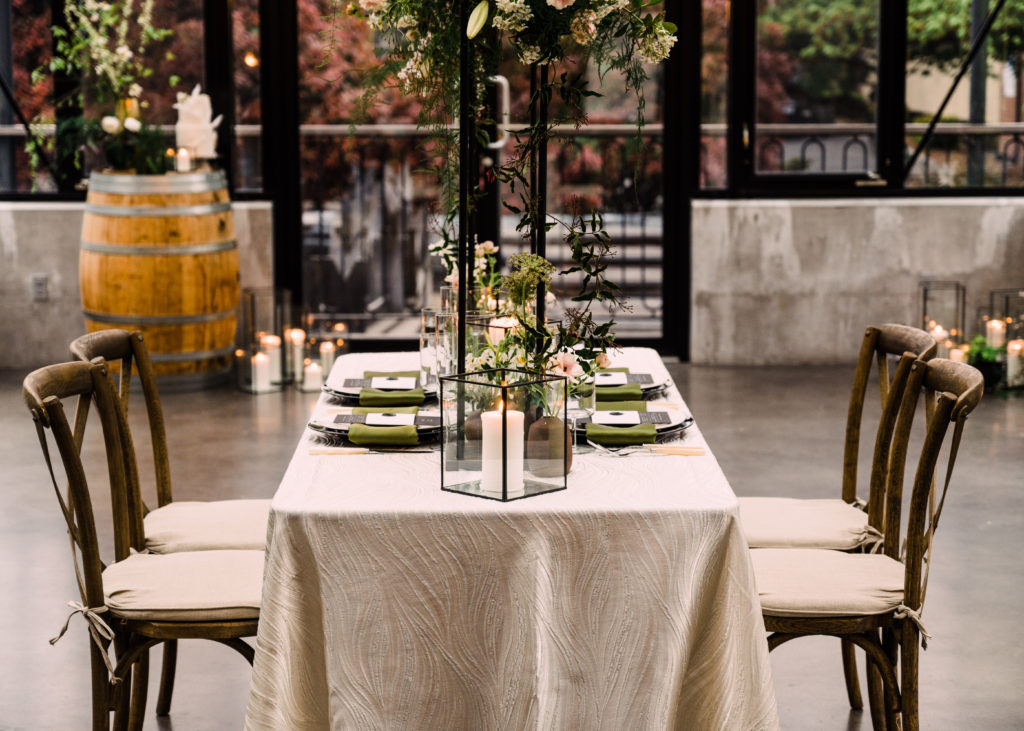
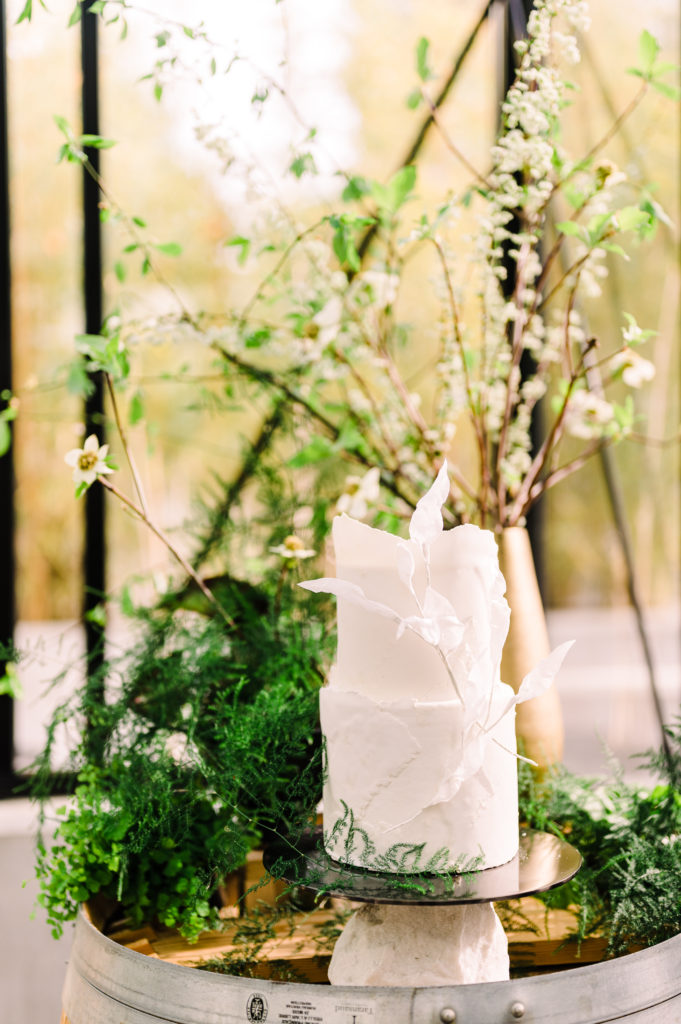
Going green with little to no flowers
By limiting the usage of blooms, and implementing more greenery, you can avoid importing flowers which allows you to use in season & locally grown greenery. You can also choose to rent in more candles and unique pieces of decor that fill the table but don’t necessarily use anything that’s living. That way, if a florist can repurpose and reuse at future events, that’s being eco-friendly.
Jori Foreman, owner and lead designer from Romee Willow Florals, explained that it’s best to use flowers grown in the season that your wedding is in for the freshest and most local options. For example, if you love peonies, get married in May or June. Or if you love dahlias, get married in September.”
Consider dried flowers
Using dried flowers repurposes florals that would have been thrown away and gives them another life! Perfect for fall weddings, it’s an awesome way to avoid some of the most wasteful parts of the floral industry.
Make your own candles
Does your florist make their own candles? Consider every votive that a wedding might have, if you have 5 votives per guest table and you have 20 guest tables, that’s 100 votives. Some florists choose to throw votives away OR purchase new wax candles to fill in the votive container. While this isn’t a process most florists have, some florists like Pollen, they pour all their own candles and repurpose all their votives so there is no waste.
Disposing of your florals
Thinking about throwing out all of your wedding flowers can be overwhelming because of their short life and of course, the expenses that went into it. Consider these options when it comes to deciding what to do with your florals after the big day:
- Donation services
- Preservation
- Composting
- Repurposing by letting guests take some home
Romee Willow Florals almost always offers a donation service for after the wedding. They mainly work with Bloom n’ toss, an organization that picks up the flowers from us the next day and brings them to nursing homes and hospitals for staff and patients to enjoy. If a donation is not possible then they compost the flowers.
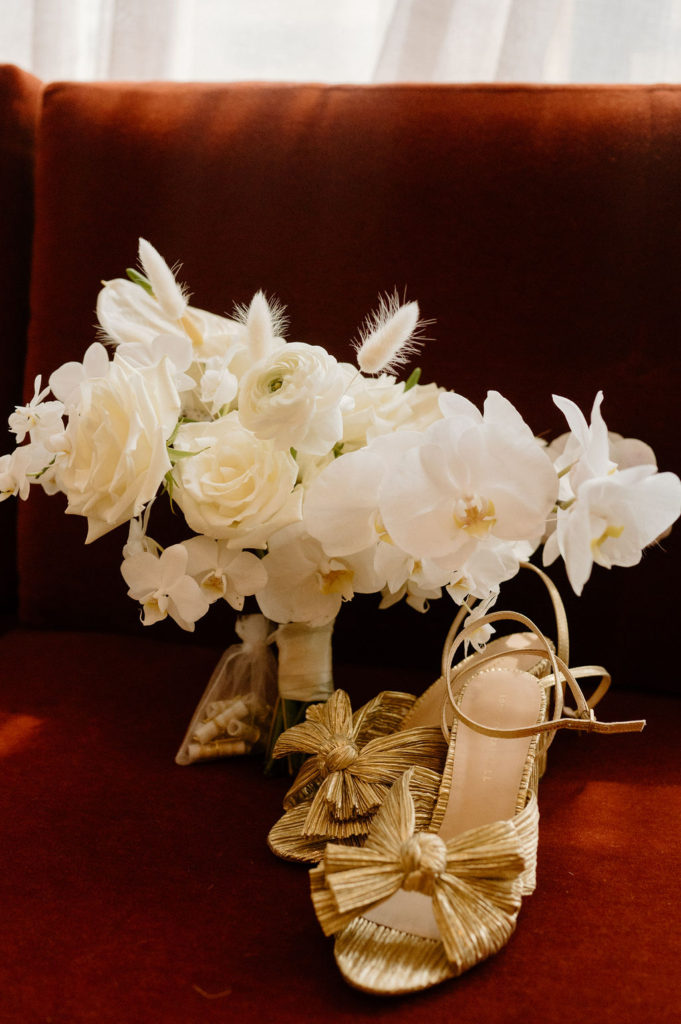
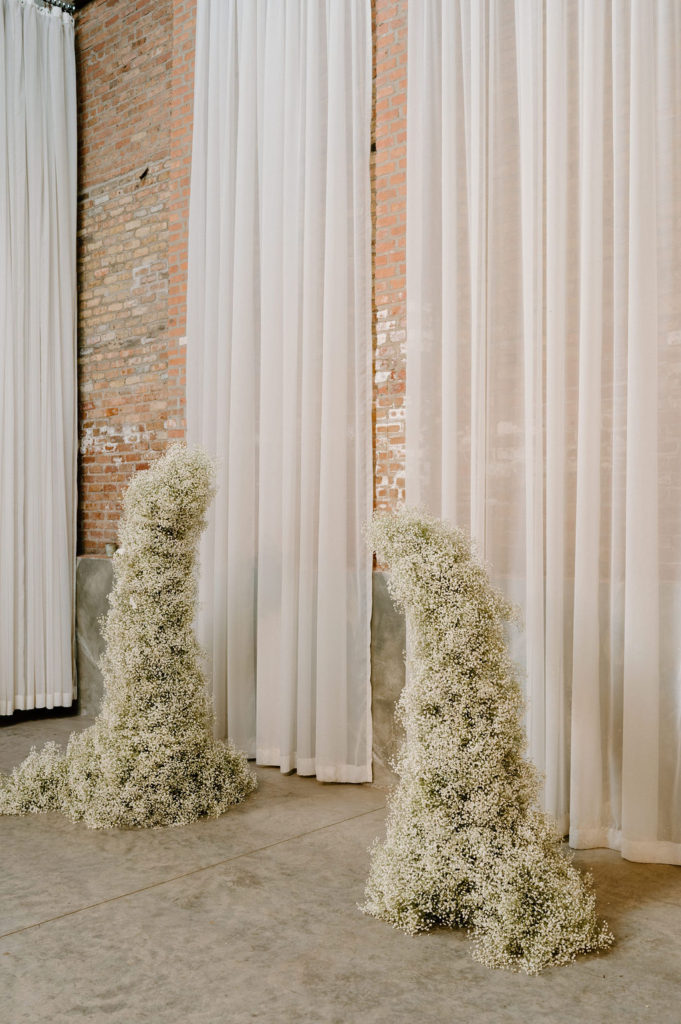
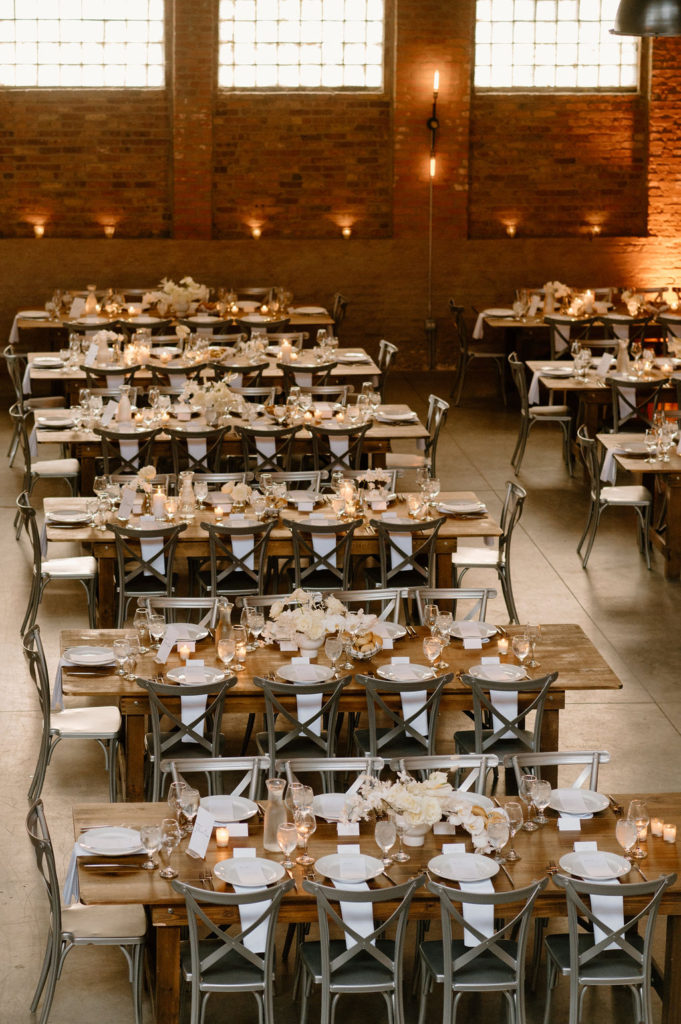
Avoid floral foam
Have you ever wondered what the foam-like green blocks are when you get an arrangement? This is called floral foam! Although floral foam is much-loved for its convenience, its impact on the environment is extremely bad because it is non-biodegradable and non-recyclable.
Fun Fact! 1 block of floral foam is equal to 10 shopping bags!
Jori Foreman from Romee Willow Florals, uses chicken wire instead of floral foam. She explained that “Floral foam is very toxic to people and the environment because it has a lot of chemicals in it. We use chicken wire inside vases and also on ceremony structures. They hold the flowers just as well and they are completely reusable.”
Here are some other ways how some florists are more eco-friendly than others:
- Recycling packaging, paper and plastic in our studio
- Composting floral waste
- Using florescent lighting in our studio
- Reusing vases & containers
- Buying locally whenever possible & using American grown suppliers and flowers
- Designing without floral foam which does not biodegrade
- Packing deliveries in recycled floral boxes and crates
- Eliminating plastic and paperboard packaging, we now deliver corsages and boutonnieres to clients on antique trays, so there is no garbage.
- We do not use floral foam, which contains formaldehyde and is not biodegradable and pollutes landfills and water supplies.
- Our mechanics for achieving fuller centerpieces and making large scale items include chicken wire, taping, and more. We reclaim these materials after an event and use them again.
- All our clippings and spent materials are composted.
- We recycle everything in the studio from flower boxes to plastic flower wrappers (we are encouraging growers to use paper wrappers) to using scrap paper on both sides.
- The studio is built for maximum efficiency with LED lighting, an Energy Star cooler that is shut down when no flowers are on site, all electronic administration and client correspondence, and all natural cleaning products.
If you have other suggestions as to how florists can be more green, let us know in the comments! We are happy to add more content to help our readers think of sustainable ideas.
– Ohana Events
© ohana events 2022 .
ALL RIGHTS RESERVED | SITE CREDIT.
CONTACT
BLOG
south florida
destination
midwest
HOME
dream big
let's
con
nect
Read
ABOUT
South Florida
Midwest
Destination
services
Events
BLOG
Get Inspired
Connect
INQUIRE
Contact Us
Chicago's Rental Collection
Meet The Team